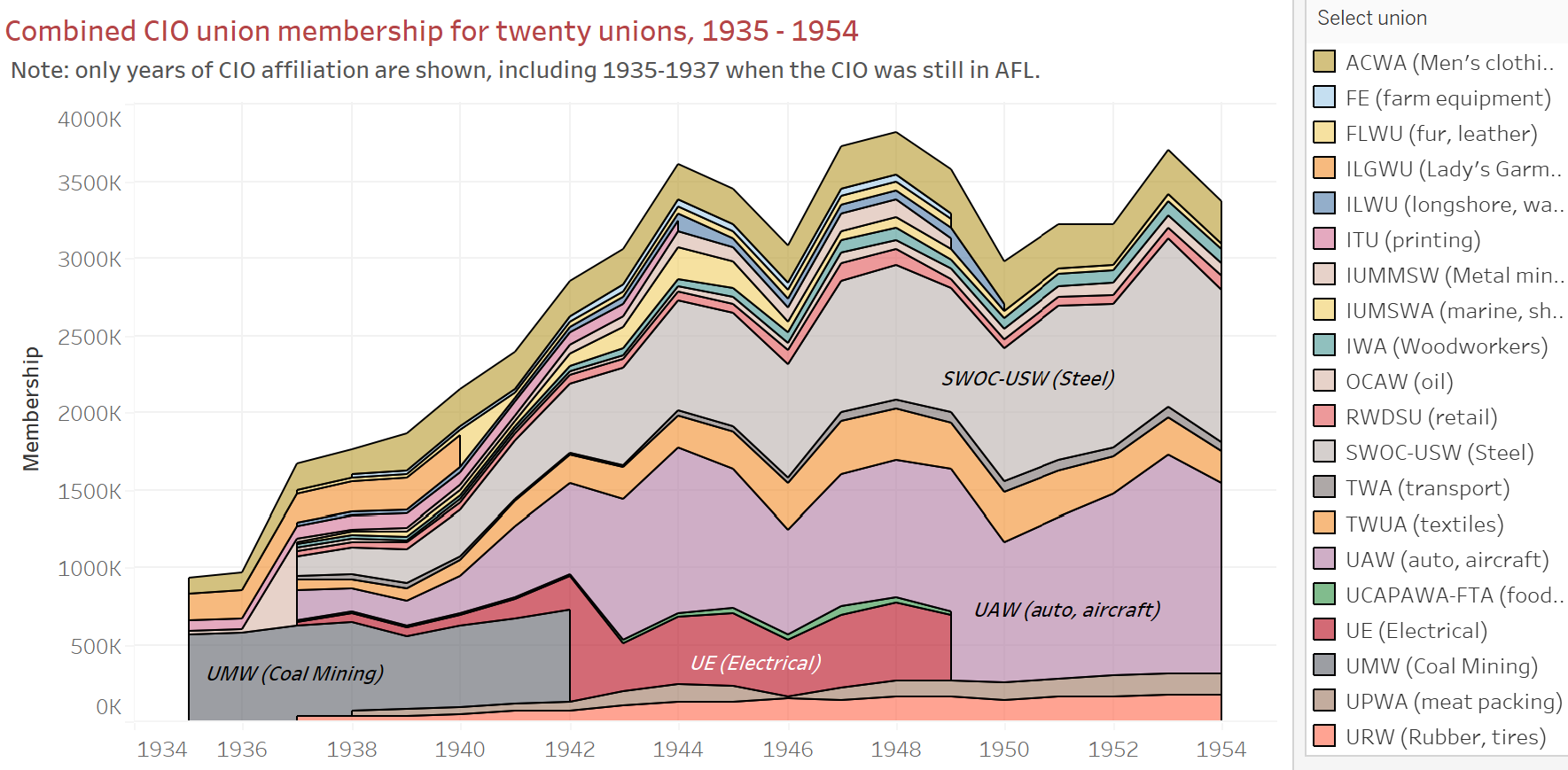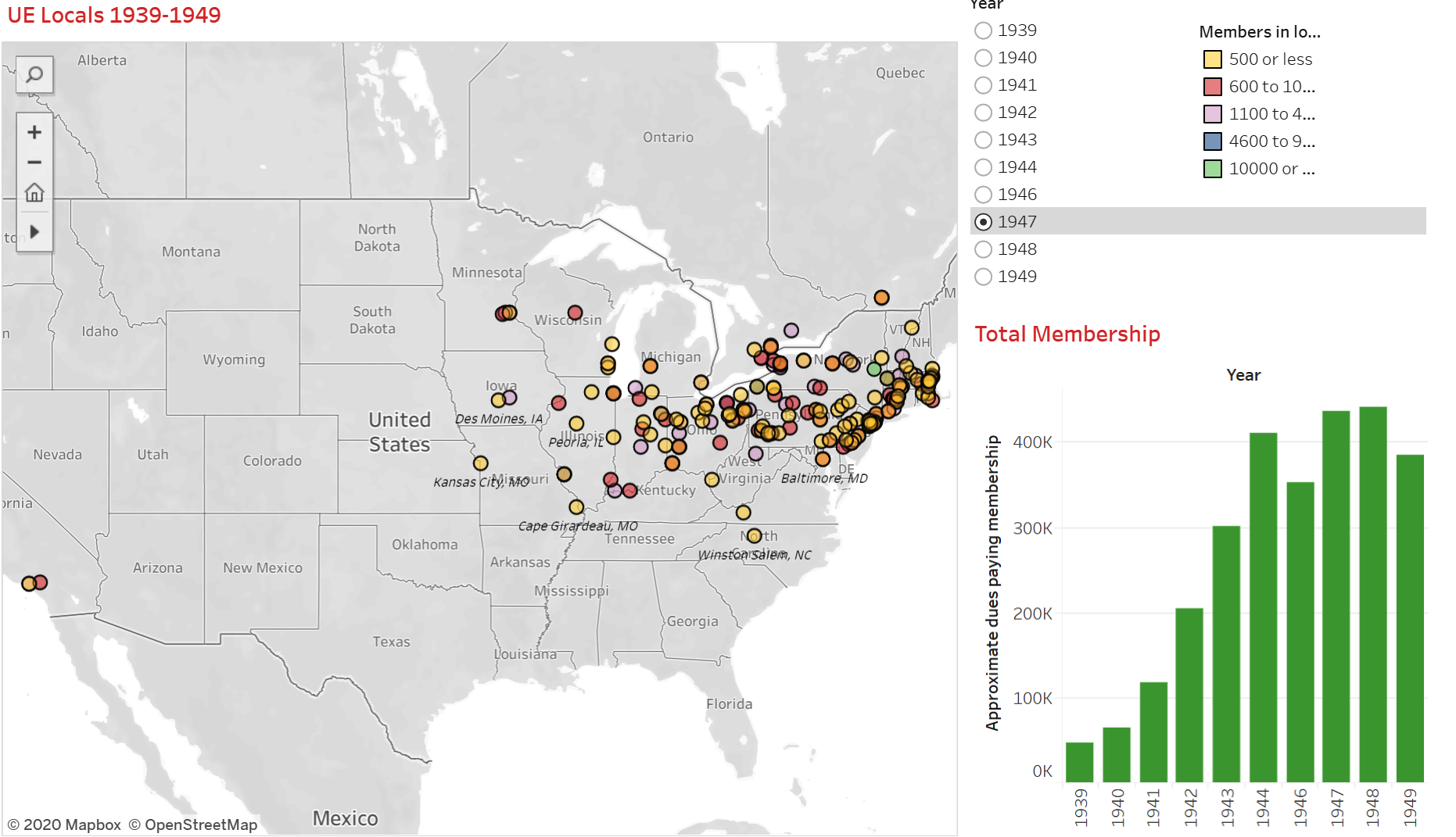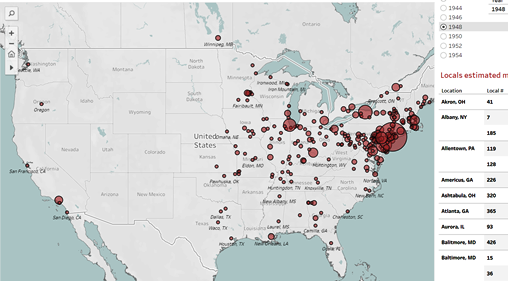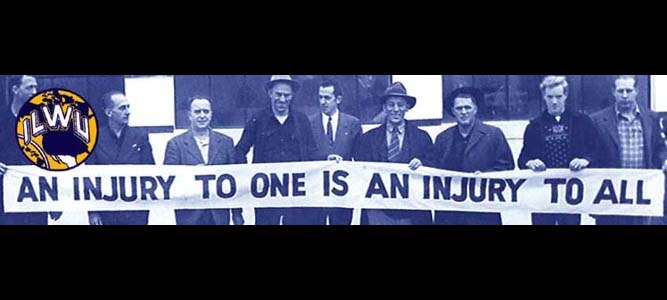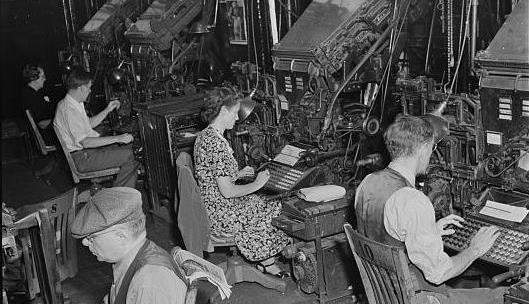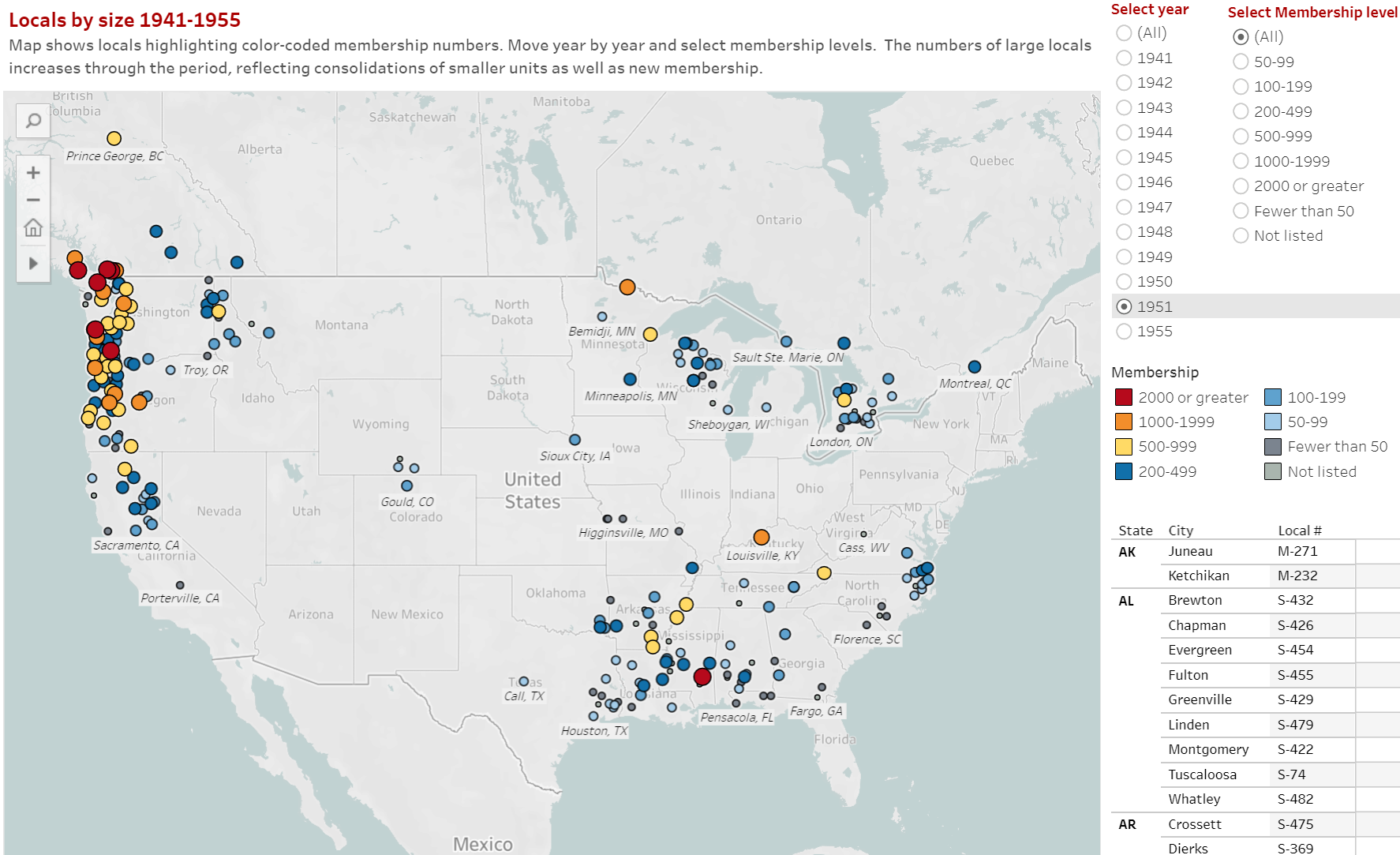 CIO pamphlet 1937 (courtesy Tamiment Library)
CIO pamphlet 1937 (courtesy Tamiment Library)
The Mapping American Social Movements Project is used in hundreds of classrooms at high school and college levels. The maps, charts, and data tables lend themselves to many kinds of observational and interpretative exercises. Here are several discussion questions for the CIO unit.
1) This exercise uses the four tabs on the CIO Unions - Mapping Locals and Membership page. The early CIO unions are usually associated with locations in the Midwest and East Coast. Do you agree with this view of CIO geography? Why or why not? Which data from the maps support your stance and which data challenge your view?
2) This exercise uses the five tabs on the United Auto Workers (UAW) locals page. Explore tab 1 map. Are there any geographic trends you notice in the locations of locals? Can you think of reasons why these cities would be an opportune place for industrial manufacturing? Alternatively, are there any areas you are surprised to see not represented by locals?
3) All of the CIO unions grew during World War II, 1941-1945. Choose one union and calculate percentage increases in membership and the number of locals year by year. Compare the numbers for 1940 with 1945. What are some reasons for this growth?
4) This exercise uses the five tabs on the United Electrical, Radio, and Machine Workers (UE) locals page. The UE has a reputation of being dominated by so-called “mega locals” for a few companies, located in specific cities. Do these maps support that?
5) This exercise uses the five tabs on the International Longshore and Warehouse Union (ULWU) locals page. Of all of these CIO unions, the ILWU stands out as unique. Which elements of the data in their maps do you think best illustrates the differences between them and the rest of the CIO? Use both maps and charts to guide your thinking.
6) What purpose do the charts and lists serve on these maps? Do you find that they help you visualize the numerical data better than the maps? What part do they add to the sum of data in the maps?
7) This exercise uses the five tabs on the United Auto Workers (UAW) locals page. Examine tab 2 (UAW locals by parent company). Filter this map by all the different industries represented by the UAW. In your opinion, were the aircraft and farm equipment industries a significant part of the union? Why or why not? Are numbers the best way to make this judgement? What might be some of the factors for these industries’ growth during the decade? Think of some potential limitations maps might have for historians trying to explain these phenomena.
8) This exercise uses the five tabs on the United Electrical, Radio, and Machine Workers (UE) locals page. Examine tab 5 (State by state locals and membership). Look at Massachusetts, New York, and Pennsylvania over the years. Try mousing over the locals in these states and looking at their membership. Can you detect any patterns or connections in the way the locals are distributed in these states? Would you expect the hubs of membership for the UE to be in the cities or in more suburban/rural areas?
9) This exercise uses the five tabs on the International Ladies Garment Workers Union (ULGWU) locals page. The ILGWU was unlike the other unions in that it was created in decades before the CIO’s formation. Are there any differences in the maps that reflect this? Try thinking both geographically and in terms of members. What does your answer suggest about the existing trade union movement before the CIO’s birth?
-- Cameron Molyneux (2020)
|
|
Additional CIO maps and charts
|
|
The CIO transformed American labor and American politics. Defying the American Federation of Labor's commitment to craft unionism, the Committee for Industrial Organization was launched in 1935 by leaders of the United Mine Workers and other AFL unions who embraced industrial union organizing strategies. The goal was to build unions in core industries like steel, auto, aircraft, electrical appliances, meat packing, tires, and textiles that had blocked organizing efforts at every turn. Here we start with growth and changes in twenty international unions and then map the locals and membership totals for seven of them, showing the spread of locals and membership density in hundreds of cities for these key unions: United Auto Workers (UAW), United Electrical Workers (UE), Amalgamated Clothing Workers (ACWA), International Ladies Garment Workers (ILGWU), International Longshore and Warehouse Union (ILWU), International Typographical Union (ITU), and International Woodworkers of America (IWA). |
|
Founded in 1935 as one of the first initiatives of the industrial union organizing committee led by John L. Lewis, the United Autoworkers won a breakthrough victory against General Motors in the dramatic Flint Michigan sit down strike in the winter of 1936-1937. After General Motors agreed to bargain, Chrysler and several smaller auto companies followed suit and by mid-1937 new union claimed 150,000 members and was spreading through the auto and parts manufacturing towns of Michigan, Ohio, Indiana, and Illinois. These maps chart the spread of the UAW from April 1939 when it counted 172 locals and about 170,000 members to 1944 with 634 locals and more than one million members then though the late 1940s when conversion to civilian production and a post-war recession caused a dip in membership even as the number of locals increased. Watch the UAW spread across the map in the 1940s, anchored in Michigan and the Great Lakes states but claiming dozens of locals in the Northeast and California, and a sprinkling in Alabama, Geogia, and Texas. |
Founded in 1936 by workers from General Electric, Westinghouse, Philco, RCA and other companies that made electrical appliances and machinery, UE soon became one of the largest and most controversial unions in the CIO, claiming a peak membership of 686,000 in 1944. UE was known as a left-wing union, many of its top leaders closely associated with the Communist Party. This had various implications in the early years. The union took strong positions on racial and gender equality. Women were important part of the work force and by the end of the war comprised about 40% of the membership. At the same time, the leftwing reputation left the union vulnerable to red-baiting, which nearly destroyed the union in the early 1950s. Here are five interactive maps and charts showing the year by year geography of the UE. |
Founded in 1900 in four East Coast cities by a workforce largely comprised of immigrants who had prior trade union experience in Europe, the ILGWU was one of the first female majority unions in the American Federation of Labor. As one of the AFL’s few industrial unions, the ILGWU joined the Committee for Industrial Organizing in 1935 as a founding member. But opposed to what they saw as rising communist influence in the CIO, ILGWU leaders left and reaffiliated with the AFL in 1940. Already well-established before joining the CIO, the ILGWU did not experience the same explosion in membership that new unions like the UAW and UE experienced in the later 1930s and 1940s. Despite this, the union maintained steady growth after 1935 and peaked at around 380,000 members in 1947. |
The Amalgamated Clothing Workers was founded in 1914 by immigrant Socialist garment workers who split from the United Garment Workers (UGW), a conservative and cautious craft union affiliated with the American Federation of Labor. It was no surprise that the Amalgamated became one of the seven founding unions when the Committee for Industrial Organization was launched in 1935. And in 1937 when the industrial unions were expelled from the AFL, the Amalgamated became part of the Congress of Industrial Organizations (CIO) with Sidney Hillman serving as Vice-President of the newly chartered Congress. |
The ILWU broke away from the International Longshoreman's Association (ILA) in 1937 in order to join the CIO. The Pacfic Coast Division of the ILA had waged a three-month long strike in 1934, closing all the ports up and down the West Coast and winning employer recognition for locals that had been without bargaining rights since the 1920s. Led by militants who defied orders from ILA headquarters, the 1934 victory set the stage for the 1937 split. Over the next 12 years, the newly independent ILWU would solidify longshore locals along the entirety of the West Coast while starting successful organizing drives in farming in Hawaii and warehouses both on the West Coast and states further east. During this period, the union’s membership more than doubled, from 25,000 to 65,000 dues paying members. |
Founded in 1852, the ITU had helped launch the American Federation of Labor in 1886 and remained one of the most progressive unions in the Federation until leaving to start the CIO in 1937. A bastion of consistency and model of successful collective bargaining, the ITU played a unique role in the early CIO. With locals in 658 cities in 1937, the union was able to win the 40-hour week for members and other protections that set aspirational standards for other unions. Its wide geography meant that ITU members were positioned to help in the organizing campaigns of other CIO unions. That remarkable geographic spread is demonstrated in these maps. And at first glance the ITU’s membership barely seems to expand over the course of the 1940s. |
The union's history began in the Pacific Northwest timber strike of 1935. The failure of the AFL-affiliated United Brotherhood of Carpenters and Joiners to respond to its members’ demands led to lumber and sawmill unionists splintering from the craft union to form the Federation of Woodworkers. A year later, the new union affiliated with the CIO as the International Woodworkers of America. Initially based mostly in Washington and Oregon, the IWA expanded rapidly in numbers and geography. With 35,000 members in 1941, the IWA claimed 94,000 a decade later. Although locals were established in the forests of the Midwest and South, much of the growth was in British Columbia, where Chinese-Canadian organizer Roy Mah and South Asian organizer Darshan Singh Sangha led efforts to organize non-white workforces around the Canadian province. |

 CIO pamphlet 1937 (courtesy Tamiment Library)
CIO pamphlet 1937 (courtesy Tamiment Library) 